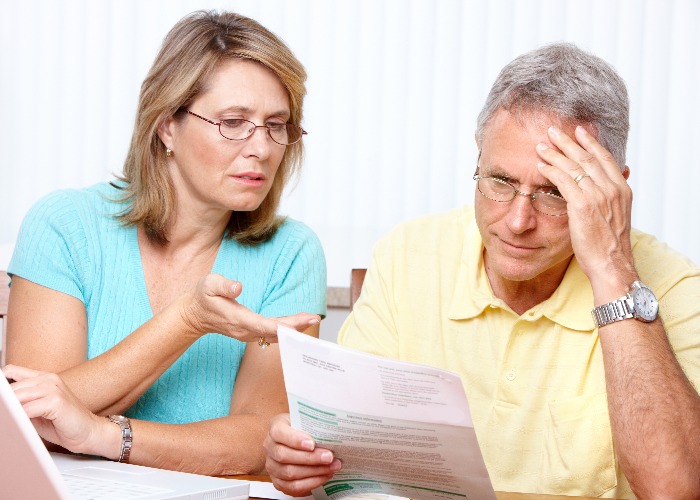Opinion: the energy price cap isn’t fit for purpose

The price cap wasn’t designed for a situation like we currently face, so it’s no shock that it’s struggling to protect households, writes John Fitzsimons.
It feels like barely a week can go by without a new, ever more dramatic prediction for just how high the energy price cap will go in the near future.
The latest, frankly terrifying, forecast comes from the energy consultancy Auxilione which reckons that the cap will hit an incredible £6,000 in April.
That comes after reaching over £3,500 in October and £4,799 in January.
According to its forecast, thankfully the cap will drop by 10% from next July ‒ a welcome change in direction. Of course, that would still leave it at almost £5,500, a sum of money that is simply beyond many households.
It’s all a stark reminder of the fact that this isn’t what the energy price cap was designed for, and why it is no longer fit for purpose.
What is the point of the energy price cap?
Cast your mind back to those days of the Theresa May Government.
One of her more significant decisions was for the Government to directly intervene in the energy market, through the introduction of the energy price cap.
However, the cap wasn’t really meant to be something that leads the market in the way it now does.
Instead, it was introduced simply as a way of ensuring that households who were entirely apathetic about switching tariffs on a periodic basis were not completely ripped off.
Remember, the cap only applies to standard tariffs, the deals you moved onto once your initial fixed or variable tariff finished, and which were always worse value.
The idea was that engaged households, who wanted to get the best value deals, would continue to switch as usual.
However those disengaged households ‒ the ones who would not, or could not, shop around for a new deal every year ‒ could not be milked excessively by energy suppliers.
Yes, the cap applied to millions of homes, so it was an important intervention. But ultimately it served as a light brake on energy firms’ greed, and little else.
The energy price cap today
Things have rather changed over the last couple of years, however. The volatility of the wholesale markets has meant that large numbers of smaller energy suppliers have gone out of business.
As I’ve detailed for loveMONEY, I’ve twice seen my supplier go bust in recent times.
As surviving suppliers have had to take on the customers of these firms that have gone bust, and the wholesale markets have continued to become more expensive, we’ve reached the incredible stage where most of us are now on deals subject to the energy price cap, with little to no chance of moving.
A couple of years ago, moving from a deal covered by the price cap meant you were almost certain to save money, in many cases quite substantially.
There have been times when the difference between the cap and the cheapest fixed tariffs on the market was more than £250.
Now, there are only one or two fixed tariffs on the market, and if you manage to move to one you’ll actually be signing up for a deal more costly than the price cap.
The only logic in doing that is if you believe that the cap will indeed continue ratcheting up in price.
What started as the worst-case scenario has transitioned into the best that most of us can hope for.
We need a better solution
The energy price cap wasn’t designed to help people in a situation like we currently face, so it’s not exactly a huge surprise that it doesn’t look like performing well.
What’s more, Ofgem ‒ the energy regulator that sets the cap ‒ is well aware of this.
In fact, it has now emerged that one of its directors, Christine Farnish, has quit precisely because of the way the cap is calculated, and the fact that it favours suppliers over ordinary consumers.
So is there a better way?
Some, like ScottishPower, have called for the cap to be replaced with a social tariff.
It’s a system that we have in the broadband market now, where lower-income households are eligible for broadband deals that deliver decent speeds and download limits, but at significantly smaller prices than regular deals command.
It’s a lovely idea, but the take-up of these social broadband tariffs has been frankly rubbish ‒ a little over 1% of those who are eligible have signed up, to the point that the Government now wants to essentially force suppliers to identify people who could get a social tariff and advertise the deals to them.
This sort of structure might work once ‒ or should that be if? ‒ the market settles down, but won’t be much help until then.
Others, like the Labour Party, have suggested freezing the price cap until next year, with the Government essentially picking up the difference in the interim.
That would certainly provide households with some breathing space, in the hope that the market settles down within 12 months, but that may be seriously ambitious.
I don’t know what the answer is. But I’m pretty confident that the energy price cap, in its current form, simply isn’t it.
Most Recent
Comments
-
Unfortunately this situation simply shows that any of the "regulators" with the prefix "OF" are simply useless, primarily because they were established without adequate, effective regulatory powers. They are basically quangos designed to shield government from the accusation that they have done nothing. They also give the opportunity to provide a substantial income for the incumbent post holder, who, of course requires a significant number of staff to fullfill their role. Our government, not Ofgem, should have interceded when it was obvious that our power supplies were at risk, to collaborate with our EU partners in an international agreement on energy costs. Market forces will dictate that prices are dictated by the maximum price that can be obtained. But energy is a life essential like air and water, it should be available to everyone and should be the collective responsibility of governments worldwide. Sadly, wizzkids in the international banking markets betting on the futures prices should not be the people to determine our futures. We should not be accepting the present exorbitant price rises and then using funds derived from taxation or future borrowings to ameliorate these costs. They should be tacked at source by our government.
REPORT This comment has been reported. -
What is the point of this article? It doesn’t give any ideas of how to deal with the situation! It doesn’t give any information about where help can be found! In fact it gives nothing except the chance to whinge and whine. If you want to do something useful with it, send it to No 10! You never know, somebody might just do something helpful! Whoops! Just ducking to avoid a swarm of flying pigs!!!!!
REPORT This comment has been reported. -
The energy price cap is a crazy socialist idea, which gave no thought to the consequences of its imposition. It is exactly like university fees. It is not a cap, but permission to the suppliers to set the price at the level of the cap, thus completely ruling out market forces. The cap is based on the cost of generating electricity from gas. Gas has gone up in price fourfold, so the price of electricity has followed. The direct result is that the companies which generate electricity from wind power and nuclear are raking in a fortune. Theresa May was a fool. The trouble now is that she has cut the top off the toothpaste tube, and the problem has now become very difficult andvery expensive to fix.
REPORT This comment has been reported.
Do you want to comment on this article? You need to be signed in for this feature









25 August 2022